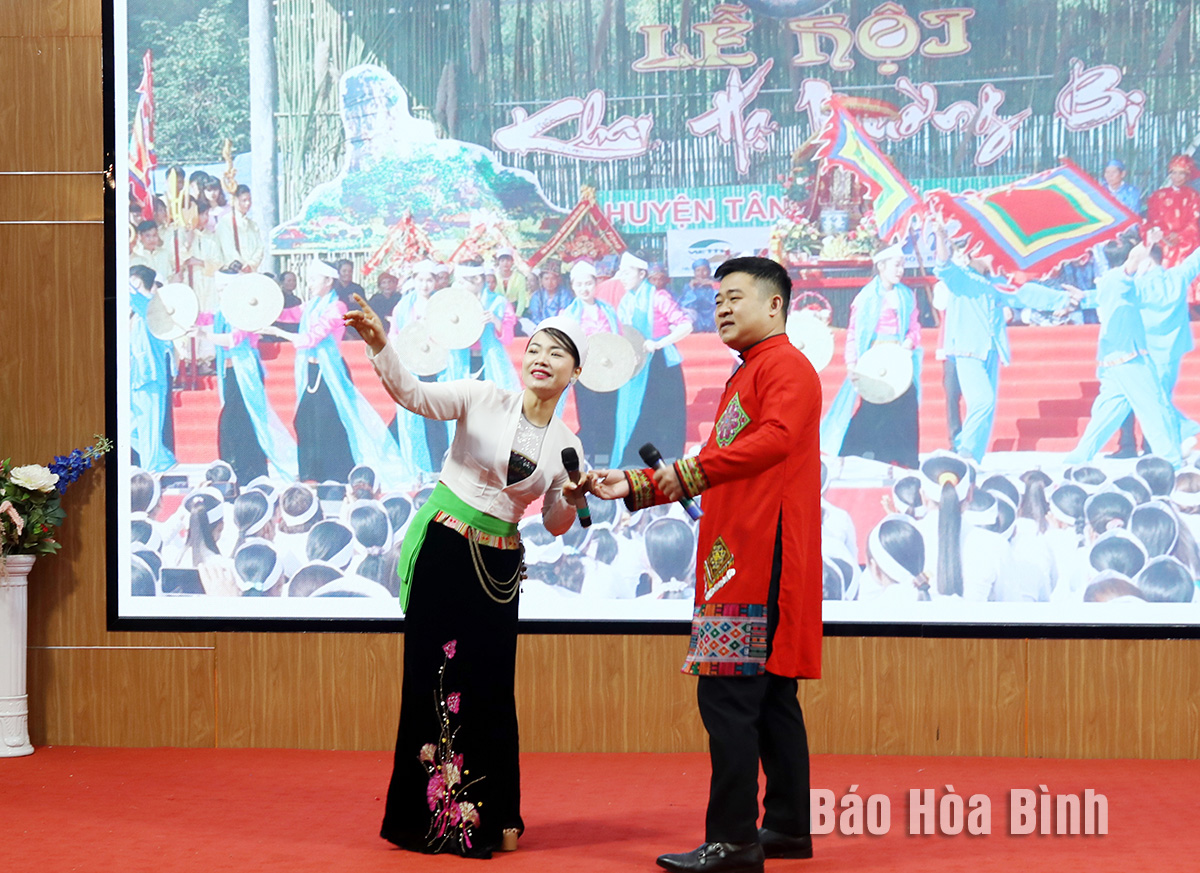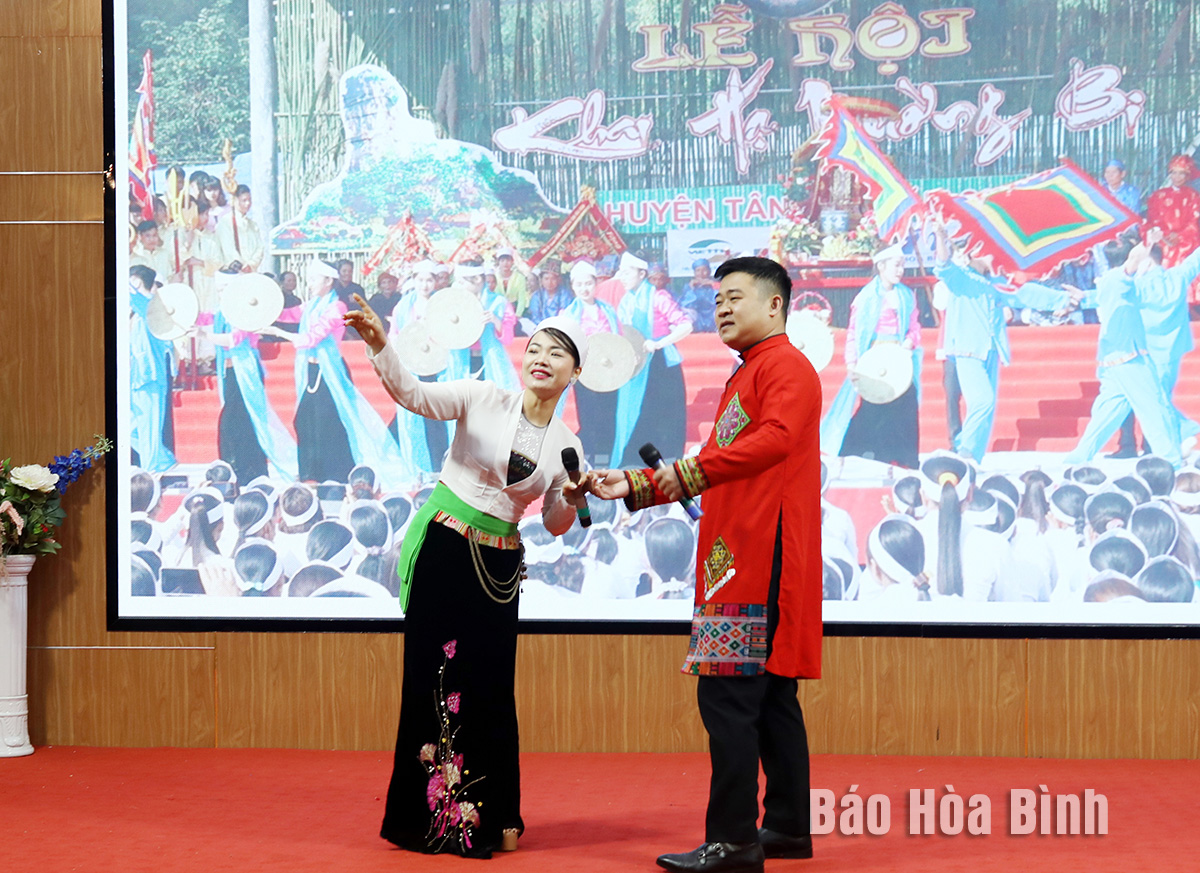
On February 9, at Hoa Binh Conference Center, the Provincial Literature and Arts Association organized the 23rd Vietnam Poetry Day in 2025 with the theme "The bright land of Poetry”. The event has attracted the participation of many artists, artisans, poetry clubs and poetry lovers in the province, along with other artists from Hoa Binh who are living and composing outside the province and the representatives of some Central Professional Associations from Hanoi.
The artists performing the musical works set to music from the poems at the program.
On the night of the Full Moon Festival in January, the year of Mau Ty in 1948, on a working trip, the President Ho Chi Minh was inspired to read the poem Nguyen Tieu in Chinese characters. Also from the poem Nguyen Tieu, since 2003, the Full Moon Festival in January has become Vietnam Poetry Day and it is celebrated in all localities across the country.
At the 20th Vietnam Poetry Day in 2025 organized by the Provincial Literature and Arts Association, many outstanding works were performed through the form of poetry recitation, poetry reading, poetry - music exchange, with the content praising the homeland, the country, the Party, Uncle Ho, the love between couples, family affection and humanistic values in life. The poetry space was solemnly decorated, imbued with the breath of Hoa Binh culture with the characteristics of Muong poetry, folk poetry and contemporary works.
In addition, the program is also a place to meet, exchange and connect between the generations of poets, from veteran authors to young writers, to share their creative journey and inspiring stories from the real life.
Vietnam Poetry Day 2025 in Hoa Binh is not only an occasion to honor the poetic works, but it is also to inspire the creativity for writers, poets and artists. The new works released in 2025 will continue to contribute to enriching people's spiritual life and encouraging the development of Hoa Binh homeland.
With an increasingly vibrant and widespread emulation movement aimed at building cultured residential areas and cultured families, Yen Thuy District has been making steady progress toward improving both the material and spiritual well-being of its people, while fostering a civilized, prosperous, beautiful, and progressive community.
Once lacking recreational spaces and community facilities, Residential Group 2 in Quynh Lam Ward (Hoa Binh City) has recently received attention for the construction of a new, spacious, and fully equipped cultural house. The project followed the model of state support combined with public contributions in both labor and funding.
The "All people unite to build cultural life" movement, which has been effectively integrated with Kim Boi district’s socio-economic development goals, is fostering a lively spirit of emulation across local residential areas, hamlets, villages, public agencies, and enterprises. In addition, through the initiative, traditional cultural values are being preserved and promoted, while community solidarity and mutual support in poverty reduction and economic development are being strengthened.
A working delegation of the Hoa Binh provincial People’s Committee led by its Permanent Vice Chairman Nguyen Van Toan on June 11 inspected the progress of a project to build the Mo Muong Cultural Heritage Conservation Space linked to tourism services in Hop Phong commune, Cao Phong district.
Born and growing in the heroic land of Muong Dong, Dinh Thi Kieu Dung, a resident in Bo town of Kim Boi district, in her childhood was nurtured by the sweet lullabies of her grandmother and mother. These melodies deeply imprinted on her soul, becoming an inseparable part of her love for her ethnic group's culture. For over 20 years, this love for her hometown has driven Dung to research, collect, and pass down the cultural values of the Muong people to future generations.
In the final days of May, the Ethnic Art Troupe of Hoa Binh Province organized performances to serve the people in remote, mountainous, and particularly disadvantaged areas within the province. These were not just ordinary artistic shows, but they were the meaningful journeys aimed at spreading cultural values, enhancing the spiritual life of the people and contributing to the preservation of ethnic minority cultural identities.



